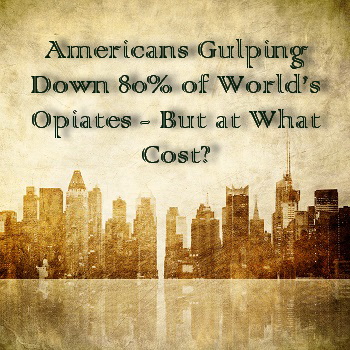How To Determine If You Have A Social Media Addiction
Wednesday, January 22, 2014Addiction is a tricky illness, especially when it comes to behavioral addictions. Chemical addictions are straightforward. A substance—alcohol or drugs—makes chemical changes to your brain and makes it difficult for you to stop using. Clear signs of dependence emerge, such as withdrawal symptoms and tolerance. But, where do you draw the line when it feels like you might be obsessively engaging in an activity? Are you addicted? And if so, how do you stop?
What Is Social Media Addiction?
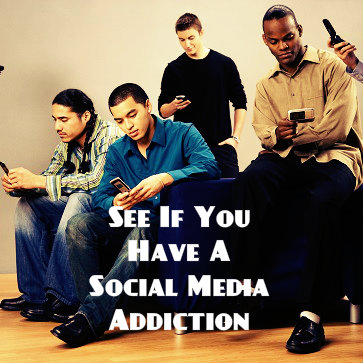 Being addicted to social media is not a condition recognized officially by the medical and addiction communities. However, there is a whole class of recognized addictive disorders called behavioral or process addictions. These refer to the compulsive and obsessive need to engage in a particular activity or behavior. It could be gambling, having sex, shopping, eating or even using social media.
Being addicted to social media is not a condition recognized officially by the medical and addiction communities. However, there is a whole class of recognized addictive disorders called behavioral or process addictions. These refer to the compulsive and obsessive need to engage in a particular activity or behavior. It could be gambling, having sex, shopping, eating or even using social media.
In our hyper-connected world in which we are all glued to devices, becoming obsessive about using them is not unusual. Social media sites like Facebook, Twitter, and Instagram allow us to keep in touch with other people, but when you keep turning to them with a burning compulsion, you may be developing a problem.
How Can I Tell If I Have A Problem With Social Media?
The line between responsible, normal use of social media and addictive use can be tricky to distinguish. It is especially difficult to see that line in your own use; it is easier to see it in others. For this reason, one sure sign that you need to rethink your usage is if someone points out your obsession. If a concerned loved one tells you that you may be turning to Facebook too often, you should listen and resist the urge to become defensive.
Another clear sign of a behavioral addiction is if you engage in the activity to feel better. If you get an emotional high or a feeling of stress relief from using social media, you are becoming dependent on it. Another sign is the experience of withdrawal. Withdrawal symptoms in chemical addictions are clear-cut and to be expected, but you can also experience them with behavioral addictions. Take notice if you feel anxious, depressed, or antsy when you can’t get to your phone or tablet to update your status.
If you find that your compulsive attachment to social media interferes with other aspects of your life, you need to reevaluate your usage. Maybe you are getting in trouble at work because you can’t stay off your favorite sites and you don’t get your work done. Maybe your relationships within your family are deteriorating because you spend too much time online. These are signs that you have a problem. Finally, if you recognize that you are online too often, try to cut back and find that you can’t, you may be addicted.
How Can I Get Help For Social Media Addiction?
As with any addiction, professional help and support of loved ones are the keys to recovery. As more people face the problem of overusing technology, more professionals are available to help you cope and come clean. Find a therapist or counselor who has experience working with people who have behavioral addictions. Also consider finding a support group that can help you deal with your problem by relating to others in the same situation. Enlist the support of your loved ones to help you get through this, and you will be successful.
Read More About Why Internet Addicts Are More Likely To Abuse Drugs And Alcohol
“Legal Highs” – Dangerous Drug Abuse, Purchased Online
Friday, December 20, 2013Illegal street drugs and prescription drug misuse can be tracked via emergency room visits. But what about “legal highs,” such as inhalants like glue and paint?
MXE Abuse
A study by Swedish researchers provides insight into the use of Methoxetamine, or MXE. The drug is classed as a “research chemical” and can be purchased online. The study was published in the Journal of Psychoactive Drugs.
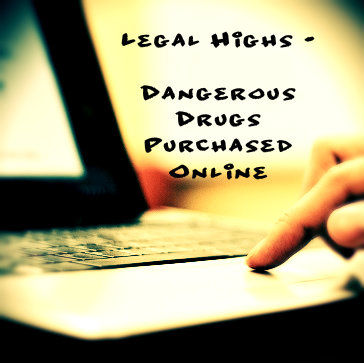 MXE is made from ketamine, a drug popularly used at clubs for its hallucinogenic and dissociative effects. Ketamine is also used for ketamine psychedelic psychotherapy, a tool used to treat depression and dependence disorders. MXE is similar in many ways to ketamine when used, but MXE tends to last longer and provide a more potent experience. The use of such substances can create a challenge for clinicians because they have little information about the contents of the drug, the interactions or side effects that are likely to occur with use.
MXE is made from ketamine, a drug popularly used at clubs for its hallucinogenic and dissociative effects. Ketamine is also used for ketamine psychedelic psychotherapy, a tool used to treat depression and dependence disorders. MXE is similar in many ways to ketamine when used, but MXE tends to last longer and provide a more potent experience. The use of such substances can create a challenge for clinicians because they have little information about the contents of the drug, the interactions or side effects that are likely to occur with use.
The researchers used online public forums to examine postings about the use of MXE. This type of study, called a phenomenological review, is useful in collecting information about experiences and perceptions. The researchers were able to gather data from anonymous posters on the sites.
MXE Effects
MXE users described dissociative properties similar to those associated with ketamine and altered states of consciousness. MXE was also reported as creating an elevated mood, an experience of euphoria, as well as long-lasting antidepressant effects, interests in new activities and personal growth.
The study’s design carries with it significant limitations. The use of anonymous reports to create a picture of the drug’s effects and risks is not the ideal way to measure the properties of a drug. However, the study provides important insight that could lead to more in-depth research. Next steps would include more systematic methods of research, including reliable measurements of effects, side effects and predictors for use.
Social Media’s Role In Mental Health Research And Drug Abuse Awareness
Social media is growing as a resource for mental health research. The use of public forums on drug use, combined with postings on other Internet sources, may not provide the same robust information as other types of study designs, but they may result in findings that provide a candid and unedited picture of users’ experiences.
The research may be helpful in raising awareness about the dangers of using chemicals to achieve a high similar to street drugs. Because they are legal and for sale on the Internet, users may misunderstand the level of danger attached to the use of these drugs. In addition to using the Internet to gather information about the use of MXE, social media may also be useful and play a role in raising awareness about the negative consequences of MXE use.
Does Synthetic Marijuana Use Increase Stroke Risk?
Wednesday, December 4, 2013According to the National Institute on Drug Abuse, synthetic marijuana is now second to only cannabis in terms of popularity. Users can achieve similar effects to natural marijuana, but the risks are multiplied.
A stroke and smoking spice study by University of Southern Florida researchers involved two young and healthy siblings that experienced acute ischemic strokes soon after smoking spice, also known as K2. Ischemic strokes occur when an artery to the brain becomes blocked.
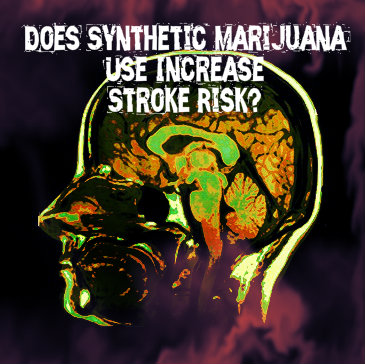 Dangerous Side Effects Of Synthetic Pot
Dangerous Side Effects Of Synthetic Pot
- Stroke
- Seizures
- Heart arrhythmia
- Heart attacks
- Psychosis
- Hallucinations
Senior author W. Scott Burgin, M.D., professor of neurology at the USF Health Morsani College of Medicine and director of the Comprehensive Stroke Center at Tampa General Hospital, said that there was some concern that the siblings could share a genetic proclivity to stroke. However, the physicians checked carefully for such a situation and did not find any genetic clues.
The researchers say the siblings experienced heart-derived strokes and that the brothers had no heart-related health problems, and that more investigation is needed to understand the potential connection between synthetic marijuana and stroke.
Properties Of Synthetic Marijuana
Synthetic marijuana is a mixture of herbal plant materials resembling potpourri that are coated with a chemical mixture intended to mimic the effects of cannabis. The mixture can be significantly more potent than cannabis because the psychoactive ingredient binds directly to the cannabinoid receptors in the brain.
The dangers of using synthetic marijuana also lies in its composition, which includes chemicals that have not been tested. Additionally, because the drug is not regulated, there is no consistency in the types or amounts of chemicals used. Dr. Burgin explains that consumers that purchase synthetic marijuana are taking a gamble with their health and their brain.
In Florida, any activities connected to selling, delivering or possession of synthetic marijuana is a third-degree felony. It’s difficult to purchase the drug at a brick-and-mortar establishment, but the drug is still available for Internet purchase.
The authors of the study urge physicians to be more aware of the potential problems associated with synthetic marijuana. When an otherwise healthy young person is treated for a stroke or heart attack, the patient should be asked about drug use. Patients will not generally volunteer drug use information and synthetic marijuana does not appear in a drug test.
Meanwhile, an editorial appearing alongside the USF findings cautions physicians that these case studies represent only two instances of stroke associated with synthetic marijuana use, even as the drug is becoming more widely used.
However, John C.M. Brust, M.D., professor of clinical neurology at Columbia University College of Physicians and Surgeons, notes that because marijuana is tied to ischemic stroke, and synthetic marijuana tends to only amplify the risks seen with natural cannabis, it is likely that strokes will be seen more often in emergency rooms.
Read More About The Problems And Dangers Of Synthetic Marijuana
Flesh-Eating Krokodil Claims U.S. Victims?
Wednesday, November 20, 2013Desomorphine, also known by the Russian nickname Krokodil or the English language equivalent Crocodile, is a synthetic substance based on the opioid narcotic drug morphine. This drug, outlawed in America, has much stronger chemical effects than morphine and produces severe side effects in long-term users that can include tissue destruction, limb loss or death. Desomorphine users commonly take a homemade form of the drug that contains one or more additional toxic substances. Until recently, desomorphine abuse was not known to affect any segment of the U.S. population. However, in September 2013, the country’s first identified cases of this abuse allegedly occurred in Phoenix, Arizona.
Desomorphine Basics
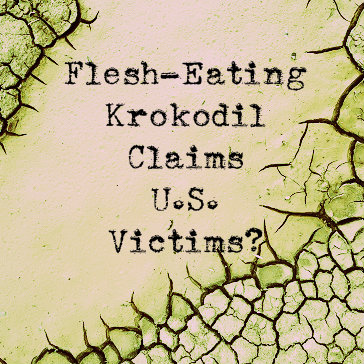 Morphine is an opioid substance taken directly from the sap of a plant called Papaver somniferum (commonly referred to as the opium poppy). Like all other natural and synthetic opioids, it achieves powerful, potentially addicting drug effects by accessing key portions of the brain and creating intense spikes in pleasure levels, as well as a reduced ability to feel pain. Desomorphine was invented in a laboratory setting in the 1930s by changing morphine molecules’ natural chemical structure. Compared to morphine, it produces roughly 10 times the level of effect at any given dose. This drug effect comes on rapidly and also fades away in a relatively short amount of time.
Morphine is an opioid substance taken directly from the sap of a plant called Papaver somniferum (commonly referred to as the opium poppy). Like all other natural and synthetic opioids, it achieves powerful, potentially addicting drug effects by accessing key portions of the brain and creating intense spikes in pleasure levels, as well as a reduced ability to feel pain. Desomorphine was invented in a laboratory setting in the 1930s by changing morphine molecules’ natural chemical structure. Compared to morphine, it produces roughly 10 times the level of effect at any given dose. This drug effect comes on rapidly and also fades away in a relatively short amount of time.
Even in its most chemically pure form, desomorphine is capable of producing significant damage when used repeatedly over time. The most common side effect of chronic use—a form of blood vessel and soft tissue damage that results in green, scaly skin—gives the drug its nickname, Krokodil (Crocodile). If left untreated, desomorphine-related vessel and tissue damage can ultimately result in tissue death (gangrene) or a clot- and inflammation-based ailment called thrombophlebitis. People with these conditions can lose their affected limbs to amputation or even die. Doctors can potentially combat the active drug effects of desomorphine with the anti-narcotic medication naloxone or other treatments used to address heroin addiction. However, there is no specific, fully developed treatment for the drug. In addition to dealing with the brain effects of desomorphine addiction, doctors commonly need to address the severe physical injuries associated with the drug’s use.
Desomorphine Abuse
Today, desomorphine abuse doesn’t typically involve batches of the drug made in a laboratory. Instead, most users make an injectable form of the drug themselves by boiling tablets of another opioid narcotic, called codeine, then combining the resulting liquid with any one of a number of additional toxic additives, including gasoline, red phosphorus, hydrochloric acid or paint thinner. Together, these substances can produce a level of blood vessel and tissue damage far above that associated with pure desomorphine, and users can develop large pockets of rotting flesh or even lose their flesh all the way down to the bone. Current evidence indicates that chronic users of “bootleg” Krokodil commonly die within a period of two or three years.
International Patterns of Krokodil Usage
The first known cases of bootleg Krokodil abuse occurred among heroin users in Russia in 2003. These users were looking for a cheaper alternative to the normally available narcotics in their country. According to current estimates, roughly 1 million people in Russia and another million people in other European regions use the drug. However, these estimates are likely quite imprecise, and no one really knows how many people in Europe or other areas across the globe take some form of Krokodil. In the U.S., desomorphine belongs to a highly restricted class of substances called Schedule I substances. All drugs with this federal classification are illegal, present a strong potential for the onset of abuse and/or addiction, and have no accepted usefulness in medical treatment. Still, some amount of pharmaceutical-grade desomorphine likely enters the U.S. through illegal Internet sales or other unlawful avenues. Americans also have access to the materials required to make bootleg desomorphine.
First Krokodil Cases In The U.S.
In September 2013, a poison control center in Phoenix, Arizona, reported two cases of Krokodil abuse among local residents. The directors of this facility believe that the cases in question are related, a situation that indicates that use of the drug is not widespread. However, since they represent the first nationally reported incidences of Krokodil abuse in the U.S., the two cases are naturally garnering significant amounts of scrutiny and media attention. As of now, no one can truly say what course the use of homemade desomorphine will take among American IV drug abusers in the years and decades to come.
Read More About The Zombie Drug Finding It’s Way To The U.S.
Scandalous Drug Sale Website Reaches The End After Selling To Teen Drug Users
Friday, October 18, 2013Silk Road, the website that became an Amazon.com for online drug deals, reached its inglorious end. Visitors to Silk Road could buy and sell illegal drugs, illicit prescription drugs, weapons and ammunition or make contact with computer hackers. Ross William Ulbricht, who founded the site under the alias Dread Pirate Roberts, had been pursued by the FBI for two years.
“Silk Road” Website Shut Down – Ross William Ulbricht AKA Dread Pirate Roberts Captured
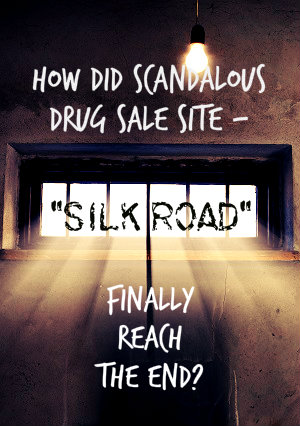 Ulbricht was arrested and the site shut down on October 1. Authorities seized $3.6 million in the virtual money known as bitcoin. Ulbricht, 29, faces a list of felonies including conspiracy to traffic in narcotics, computer hacking, money laundering and solicitation of murder.
Ulbricht was arrested and the site shut down on October 1. Authorities seized $3.6 million in the virtual money known as bitcoin. Ulbricht, 29, faces a list of felonies including conspiracy to traffic in narcotics, computer hacking, money laundering and solicitation of murder.
Silk Road was launched in 2011 and has served as an Internet clearinghouse for drug deals totaling around $1.2 billion. Ulbricht’s personal take home as middleman on those sales was reported to be $80 million.
Dread Pirate Roberts referred to a masked character in the movie and novel The Princess Bride who, it turned out, was not one man but a series of men, allowing the name to be passed on to the previous holder of the title to retire with his riches. Ulbrict is alleged to have sought out contract killers to assassinate people he disagreed with, posted an email address which contained his name in an online forum and alluded to the illegal operation on his personal LinkedIn account. All of which lead to his capture instead of retiring with his millions.
Ulbricht had everything going for him. He graduated from the University of Texas at Dallas, where he was a physics major on a full scholarship. Later he became a graduate research assistant at Penn State University, earning his Master’s Degree in Materials Science and Engineering and writing a thesis with the title “Growth of EuO Thin Films By Molecular Beam Epitaxy.” But after leaving Penn State he shifted his goals from physics to libertarian principles, viewing the Silk Road website’s forum for conducting illegal transactions as a model of economic theory that, according to his LinkedIn account, would “abolish the use of coercion and aggression against mankind.”
Selling Illegal Drugs To Teenagers Secretly Over Internet
The website and its users employed blocking software which protected identities on both ends from discovery by legal authorities. And he used a virtual currency, bitcoins, to pay for it all. The expertise behind the Silk Road and bitcoins may be admirable, but the application of that knowledge has been anything but.
Ulbricht has said that he is interested in peaceful Eastern religion and starting a family. But what Silk Road allowed was a haven for criminal activity, including the sale of illegal drugs to teenagers. The drugs were sold in secret over the Internet and then delivered by the U.S. postal service. Ulbricht tweeted about the irony, a sort of public thumbing of his nose. But authorities got the last laugh.
You May Think It’s Molly, But It May Not Be
Thursday, October 17, 2013Hospitals face a difficult problem whenever someone comes in to be treated for a Molly overdose. The patient may believe they’ve taken a form of ecstasy, but there is no way to know what the person actually swallowed. There is no “Truth in Labeling Law” to govern illegal drugs, and many think they’ve been using Molly when they’ve really been taking some other highly dangerous substance.
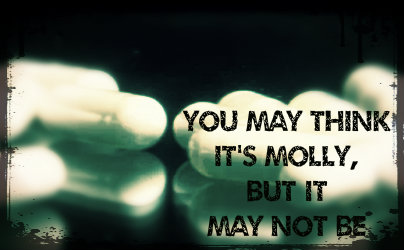
Courtesy of: www.ktsm.com
Molly is the street name for the synthetic drug MDMA. It’s called Molly because of the powder or capsule form that it comes in, as opposed to tabs, and the presumption that the “molecular,” or Molly for short, form is more pure. Synthetic drugs are also sometimes referred to as designer drugs. They are often compounds designed to mimic the effects of traditional drugs like marijuana, LSD or ecstasy, among others. Synthetic marijuana, for example, is sold as K2 or Spice.
Mislabeled And Dangerous Synthetic Designer Drugs
The problem is that you don’t know the person who designed your Molly. The Drug Enforcement Agency regularly tests the drugs it obtains through seizures. Those tests often reveal that pills are mislabeled.
Experts often find methylone in the pills, which is a key component in bath salts, another synthetic drug famous for being unpredictable and causing serious health side effects. In 2012 a man was arrested for importing methylone from China and then selling it to someone as Molly. That person died after using the drug.
Dangerous Side-Effects Of Molly
Molly is a popular drug for young people attending raves, dance clubs and concerts. The drug enhances positive emotions and feelings of bonding with others. However, Molly also increases a person’s heart rate and raises their body temperature, sometimes to extremes. One young man died with a body temperature of 109 after taking Molly. The risks of dehydration are so well known that special booths are often set up at events where Molly is expected to be used.
Symptoms commonly seen in hospitals include agitation, seizures, soaring fever and increased heartbeat. Since there is no way to know for certain what the young person actually ingested, the best hospital staff can do is to manage symptoms while they wait for the effects of the drug to wear off. Hardly reassuring.
Dying After Taking Molly
Over Labor Day weekend 2013 several young people died after taking Molly at various concert venues, with one multi-day concert in New York was shut down due to deaths. Nevertheless, rappers and rock stars continue to sing about the beauties of Molly. And young people continue to swallow whatever they are being told by their idols.
To Read More About Molly’s Dangerous Side-effects On Teens – Click Here
Americans Gulping Down 80 Percent of World’s Opiates
Monday, August 19, 2013Across the U.S., public school health classes and counselors continue to teach about the dangers of drugs like alcohol and cocaine. In the last few years, however, students have begun to learn about what public health officials are identifying as a much larger problem: prescription drugs.
Last year, the pharmaceutical industry released a statement saying that 4.02 billion prescriptions were written in the U.S. in 2011. This comes out to about 13 prescriptions for every American, an all-time record in the U.S. But are all these prescriptions fueling the current prescription drug addiction and overdose rates?
The Statistics
- U.S. doctors wrote 4.02 billion drug prescriptions in 2011.
- According to the CDC, nearly half of the U.S. population has taken at least one prescribed drug during the last month, and more than 20 percent of the U.S. population has taken three or more.
- More than 75 percent of doctor office visits involve prescription drugs.
- More Americans die from prescription overdose than from cocaine and heroin combined.
- Since 2008, more Americans die from prescription overdoses than from car accidents every year.
- In 2011, 16,500 Americans died from prescription painkillers alone.
- Since 2000, the number of prescription overdoses has more than doubled among men, and more than quadrupled among women.
- Americans consume 80 percent of opiate painkillers produced worldwide.
- An estimated 36 million “serious adverse reactions” to prescribed medications in the U.S. every year.
A Growing Epidemic
The dramatic rise of drug prescriptions written every year in the U.S. seems to mirror the alarming rise of prescription drug overdoses, and many experts, including doctors and public health officials, are looking at the issue more seriously. These drugs are very beneficial, but at what cost? Some of the more popular prescribed drugs happen to be some of the most familiar, appearing in magazine, radio and television ads across the country. A recent report released by a London medical journal states that for every $1 spent on researching a particular drug, an additional $19 is spent on promotion and marketing.
The Country’s Most Popular Prescribed Drugs
The numbers of prescriptions written have risen for many drugs across the board in the last decade, and certainly in the last several years. Note that many of the county’s best sellers are not often involved in many overdose deaths (with the exception of hydrocodone). As of 2010, the most popular prescribed medications include:
- Hydrocodone (opiate combined with acetaminophen/Tylenol): pain reliever
- Zocor: drug treating high cholesterol
- Lisinopril: drug treating blood-pressure
- Synthroid: synthetic thyroid hormone
- Norvasc: drug treating blood-pressure
In 2011, the figures changed somewhat, with the anti-depressant Zoloft taking the top slot, followed by the cholesterol medication Lipitor. Sales of drugs treating attention-deficit hyperactivity disorder also jumped, rising 17 percent from 2010.
Most Dangerous Prescribed Drugs
As fatal prescription drug overdoses continue to climb, scientists have been focusing their research on the main drivers behind the epidemic, trying to find which drugs are most likely to cause harm. Opiate painkillers, with their powerful addictive and sedative properties, continue to top the charts and include popular painkillers like OxyContin, Hydrocodone and Vicodin. However, doctors have been aware for some time that taking multiple prescription medications heightens the risk of an overdose.
Medical News Today, for example, reports that many reported fatal overdoses have involved multiple prescription drugs or alcohol. A group of anti-depressants known as benzodiazepines (which includes brand names such as Xanax, Valium and Ativan) seem to be a major contributor, and are involved in about 30 percent of opiate painkiller deaths. This is the first study to point toward a particular group of medications as a dangerous combination with opiates. The danger of alcohol in conjunction with opiates, however, is very well documented.
Of all prescription overdose deaths in the U.S., the ones most commonly involved, alone or in combination with others, are listed below:
- Opioid painkillers: found in about 75 percent of overdoses
- Benzodiazepines: found in about 30 percent of overdoses
- Anti-depressants: found in about 17 percent of overdoses
- Drugs for epilepsy and Parkinson’s: found in about 8 percent of overdoses
The Industry’s Response
The pharmaceutical industry greeted the latest numbers on written prescriptions with enthusiasm. After all, it’s a sign that the industry is growing. When confronted about the alarming rise in prescription drug deaths, manufacturers like Purdue have so far responded with statements about their labeling practices and commitment to working with government officials.
Medical News Today has pointed to unethical online pharmacies as part of the problem. It’s true that recent studies show a link between Internet access and an increase in prescription drug abuse, but doctors are still wary, stating that more studies need to be done. Most likely, online pharmacies (like some corrupt pharmacies elsewhere) comprise just one of many venues that addicts use to get their drug of choice.
Perhaps simply stating that patients and doctors need better communication, or that patients need to read labels more carefully, isn’t enough to combat the problem. After all, Americans consume 80 percent of the world’s supply of opiate medication every year—does this really mean Americans are in more pain than everyone else, or is this a reflection of a broader problem? Whether or not the pharmaceutical industry has any responsibility in the rise of overdose deaths, the problem remains and affects everyone, from preteens to the elderly. Unlike the scary drugs we all learned about in school, these drugs are used and abused by almost every demographic. Complicating the issue even further, these same drugs also help save and improve lives. The question now should be: how do we lower abuse and fatality rates of prescription drugs without restricting access to the patients who really need them? It really is a tough question to answer.
Online Pharmacies Ready to Sell to Teens Without a Prescription
Thursday, August 1, 2013The prescription drug abuse epidemic is an ongoing battle. Community awareness endeavors encouraged moms and dads to be more aware of the prescription drugs in family cupboards and to secure or remove those drugs. There have been prescription drug turn-in days to help parents responsibly dispose of unused prescriptions. Federal agents have been successful in closing down local pill mills and prosecuting complicit pharmacies here in America. But that does not mean that the supply line for illicit prescription drugs has been shut down. Overseas Internet pharmacies are only too happy to take up the slack.
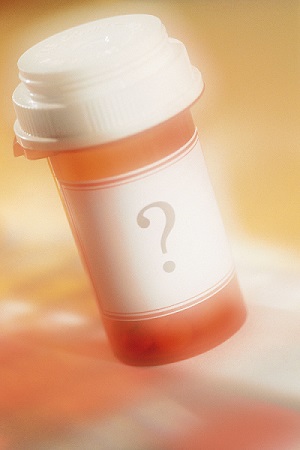 A watchdog group called Digital Citizens Alliance engaged the help of a 15-year-old boy to document the ease with which kids can order prescription drugs from abroad. The group videotaped the young boy calling an overseas pharmacy and ordering the prescription painkiller Percocet without a doctor’s prescription. During a second recorded call, this time asking for Hydrocodone, the boy confessed his age and mentioned that he was using his parent’s credit card to pay for the drug. The person at the other end of the call ignored the boy’s age and the lack of doctor prescription and merely asked for more credit card information.
A watchdog group called Digital Citizens Alliance engaged the help of a 15-year-old boy to document the ease with which kids can order prescription drugs from abroad. The group videotaped the young boy calling an overseas pharmacy and ordering the prescription painkiller Percocet without a doctor’s prescription. During a second recorded call, this time asking for Hydrocodone, the boy confessed his age and mentioned that he was using his parent’s credit card to pay for the drug. The person at the other end of the call ignored the boy’s age and the lack of doctor prescription and merely asked for more credit card information.
The group tested the drugs received through phone ordering. In some cases, the drug was exactly what it claimed to be, but in other cases, it was not. Orders for codeine from Pakistan delivered via India proved to be the real deal, but another order for Hydrocodone proved false. This demonstrates several of the problems with online pharmacies. They are difficult to track down and not reliable in terms of drug authenticity.
A second group called LegitScript spent five years investigating online pharmacies for the president. That group says that 97 percent of Internet pharmacies are not on the up and up and only rarely ask for a doctor’s prescription. In most cases, all a buyer is required to do is to fill out an online form. And, if you don’t have mom or dad’s credit card, no problem; Western Union works just as well.
There are more than 40,000 of these kinds of pharmacies. They pop up and disappear quickly. They sell to anyone who can show them the money. These overseas drug vendors have created a never-ending battle for law enforcement who can’t possibly track down every one of them. Prosecution is also difficult since there is another government involved.
Teens may not be raiding the family medicine chest, but they have found another way to get illicit prescription drugs. Parents need to educate teens about another reality however. It is illegal to sell drugs without a prescription and it is illegal to purchase them without a prescription too.


